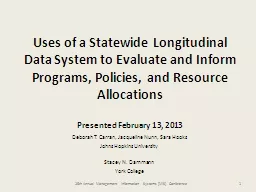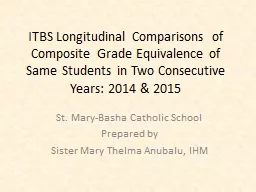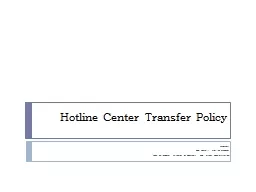PPT-Uses of a Statewide Longitudinal Data System to Evaluate and Inform Programs, Policies,
Author : luanne-stotts | Published Date : 2019-11-23
Uses of a Statewide Longitudinal Data System to Evaluate and Inform Programs Policies and Resource Allocations Presented February 13 2013 26th Annual Management
Presentation Embed Code
Download Presentation
Download Presentation The PPT/PDF document "Uses of a Statewide Longitudinal Data Sy..." is the property of its rightful owner. Permission is granted to download and print the materials on this website for personal, non-commercial use only, and to display it on your personal computer provided you do not modify the materials and that you retain all copyright notices contained in the materials. By downloading content from our website, you accept the terms of this agreement.
Uses of a Statewide Longitudinal Data System to Evaluate and Inform Programs, Policies,: Transcript
Download Rules Of Document
"Uses of a Statewide Longitudinal Data System to Evaluate and Inform Programs, Policies,"The content belongs to its owner. You may download and print it for personal use, without modification, and keep all copyright notices. By downloading, you agree to these terms.
Related Documents














